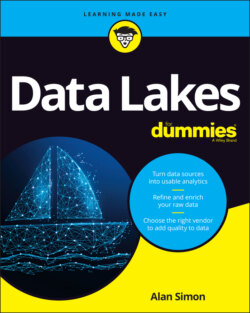Читать книгу Data Lakes For Dummies - Alan R. Simon - Страница 13
Rock-solid water
ОглавлениеA data lake should remain viable and useful for a long time after it becomes operational. Also, you’ll be continually expanding and enhancing your data lake with new types and forms of data, new underlying technologies, and support for new analytical uses.
Building a data lake is more than just loading massive amounts of data into some storage location.
To support this near-constant expansion and growth, you need to ensure that your data lake is well architected and solidly engineered, which means that the data lake
Enforces standards and best practices for data ingestion, data storage, data transmission, and interchange among its components and data delivery to end users
Minimizes workarounds and temporary interfaces that have a tendency to stick around longer than planned and weaken your overall environment
Continues to meet your predetermined metrics and thresholds for overall technical performance, such as data loading and interchange, as well as user response time
Think about a resort that builds docks, a couple of lakeside restaurants, and other structures at various locations alongside a large lake. You wouldn’t just hand out lumber, hammers, and nails to a bunch of visitors and tell them to start building without detailed blueprints and engineering diagrams. The same is true with a data lake. From the first piece of data that arrives, you need as solid a foundation as possible to help keep your data lake viable for a long time.
